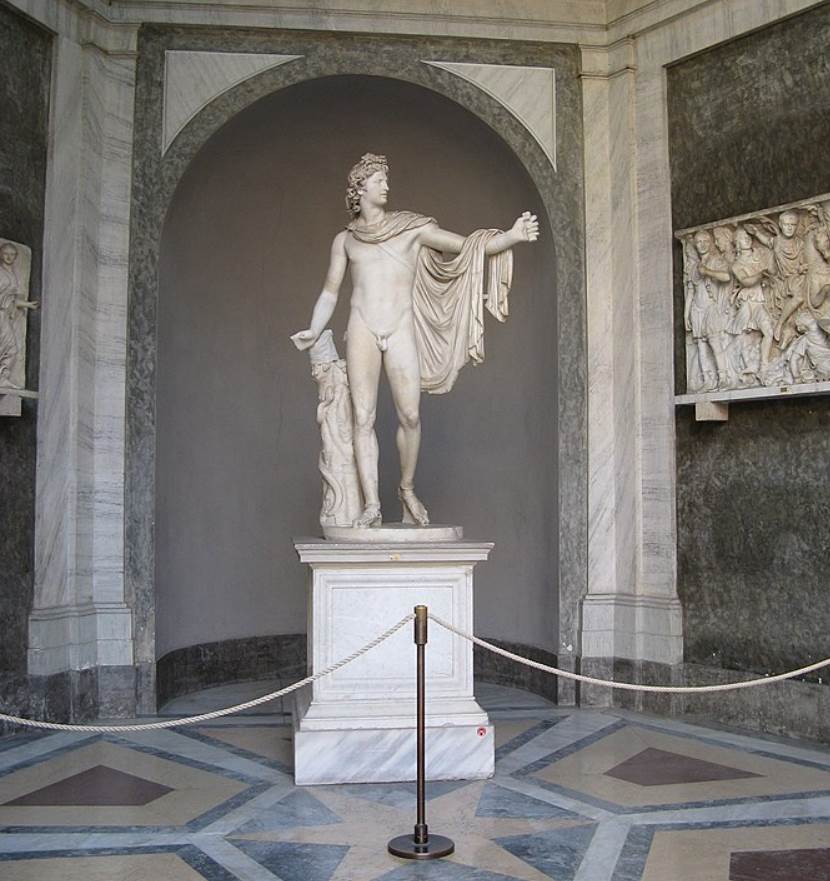There’s hardly a better place to admire ancient sculptures than at the Vatican Museums in Vatican City, the small Papal enclave in central Rome.
Considered to be one of the ultimate highlights of the sculpture collection, this ancient work certainly emphasizes the sophisticated nature of artists thousands of years ago.
In this article, we’ll take a closer look at some of the most interesting facts about the Apollo Belvedere, a sculpture that exemplifies the ideals of classical art and beauty.
1. It was probably completed during the reign of Roman Emperor Hadrian
The Apollo Belvedere is also sometimes referred to as the “Apollo of the Belvedere” or “Pythian Apollo” and is a fascinating ancient marble sculpture.
Although it was carved in the typical Hellenistic style, it’s believed to date back to the reign of Hadrian (76-138 A.D.), the Roman Emperor between 117 and 138 A.D.
The reason why it was sculpted in the Greek style during Roman times was that Hadrian was highly interested in Greek literature and culture.
He spent quite a bit of time in Roman Greece and became an Athenian citizen when he was in his thirties. His love for Greek culture, something that earned him the nickname “Graeculus or “Greekling,” certainly played a role in the sculpture’s design.
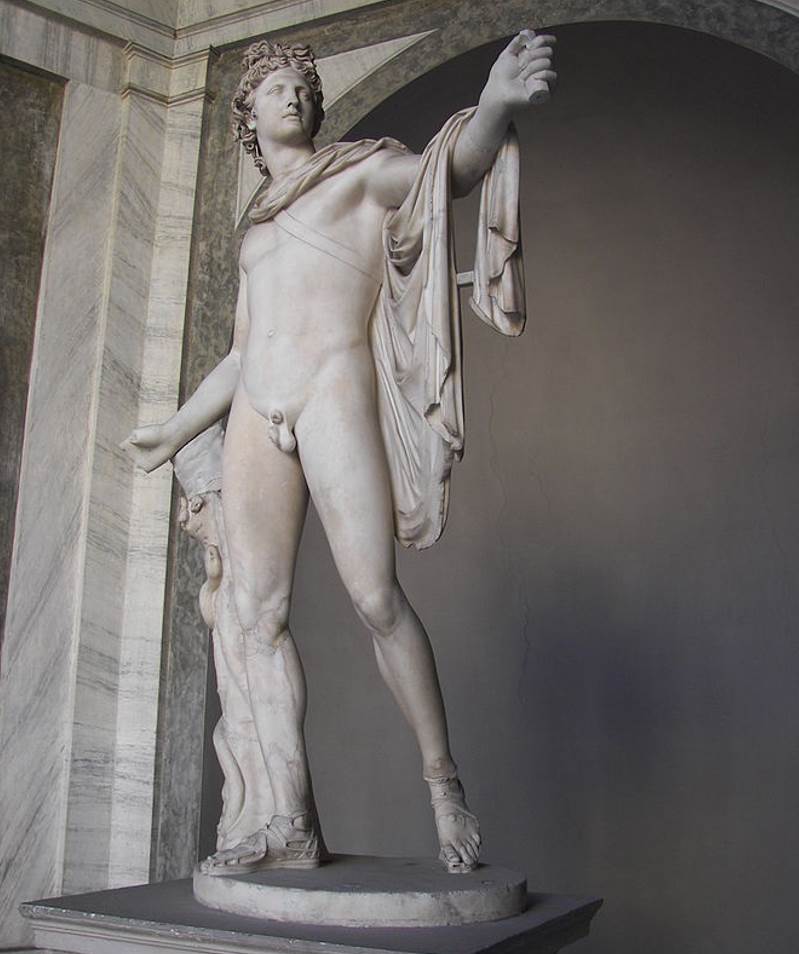
2. It depicts the Greek god but he wears typical Roman shoes
The sculpture was rediscovered in 1489 in Anzio, a town 51 kilometers (32 miles) south of Rome. This was a period that can be referred to as the height of the Renaissance.
Multiple Renaissance artists produced some of the most famous artworks in history in the late 15th and early 16th centuries in an attempt to surpass art produced in classical antiquity.
At the time, it wasn’t easy to distinguish Greek and Roman sculptures. Luckily, the Apollo Belevedere wears typical Roman shoes which made it easy to figure out it was completed during the Roman era.
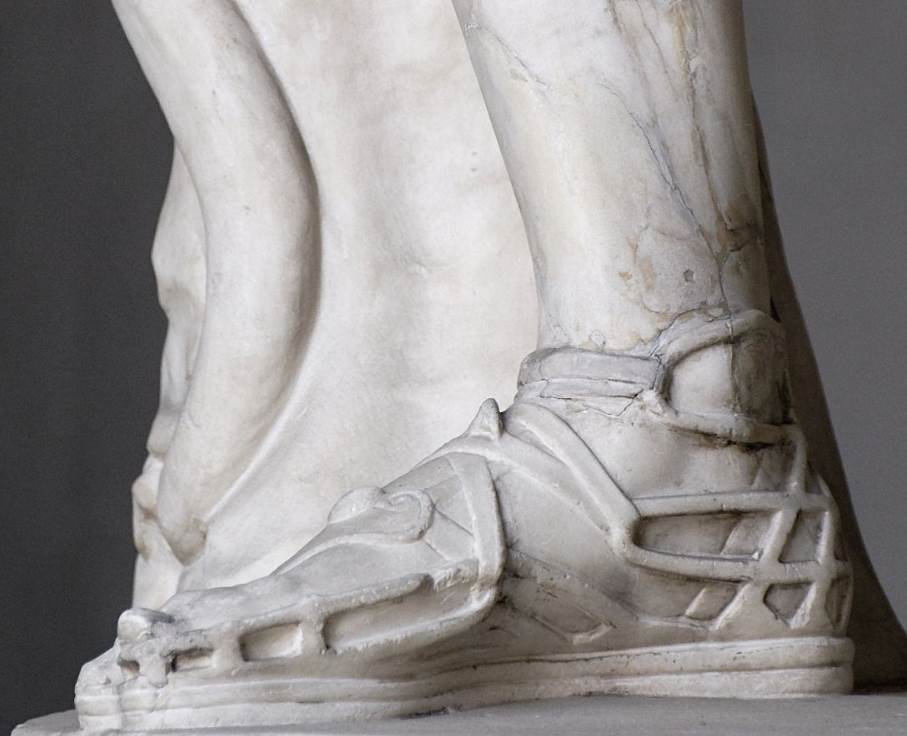
3. It depicts Apollo shortly after he had shot an arrow to kill a serpent of a giant
The ancient Greek god Apollo is depicted as a nude male except for his footwear and a robe that hangs around his neck and left arm.
He’s depicted as an archer who just shot an arrow. There are no references to what he just shot so there are three common theories regarding this:
- The serpent Python – A serpent that guarded Delphi according to Greek mythology. because of this, the statue is also sometimes referred to as the Pythian Apollo.
- The giant Tityios – A giant in Greek mythology who had just threatened Apollo’s mother Leto.
- The story of the Niobids – The children of Amphion of Thebe and Niobe who were slain by Apollo and Artemis.
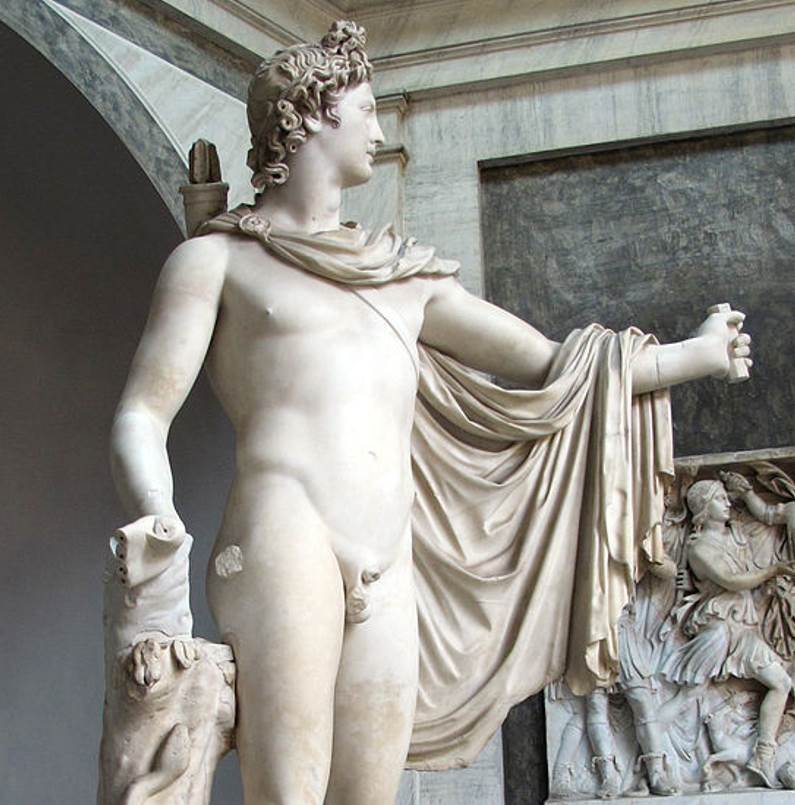
4. It’s one of the most perfect examples of contrapposto in the history of sculpture
Regardless of the narrative, the sculpture magnificently depicts the moment shortly after Apollo shot an arrow. There are details of his muscles still lingering from this effort.
The other remarkable detail about the Apollo Belvedere is his position known as “contrapposto.”
This is a technique in the visual and especially sculpture to balance the figure’s weight onto one foot. Because Apollo had just taken an action, it’s distinctively different than similar sculptures such as, for example, Augustus of Prima Porta the Statue of David.
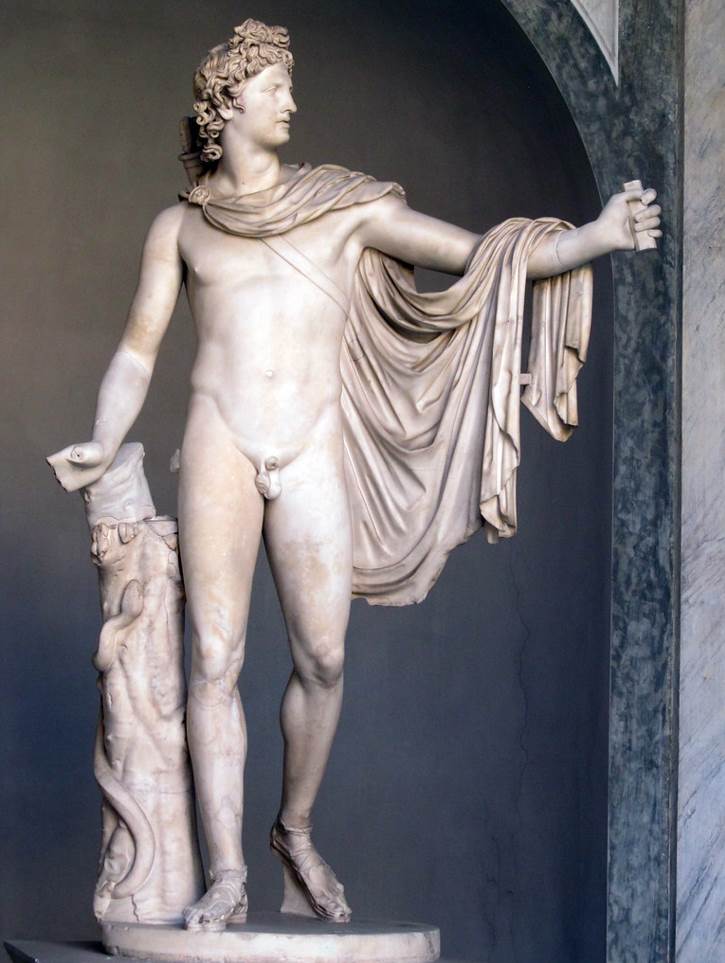
5. Part of the sculpture was restored in the 16th century by a student of Michelangelo
Not every single element of this sculpture is original. When it was discovered in the late 15th century, it was missing its left hand and the lower part of the right arm.
These elements were restored by a man named Giovanni Angelo Montorsoli (1507–1563), a Florentine sculptor who specialized in restoring classical works.
His most famous work is the Fountain of Orion in Messina and he also restored part of the world-famous Laocoön and his Sons. He was a student of the famous Renaissance sculptor Michelangelo (1475-1564).
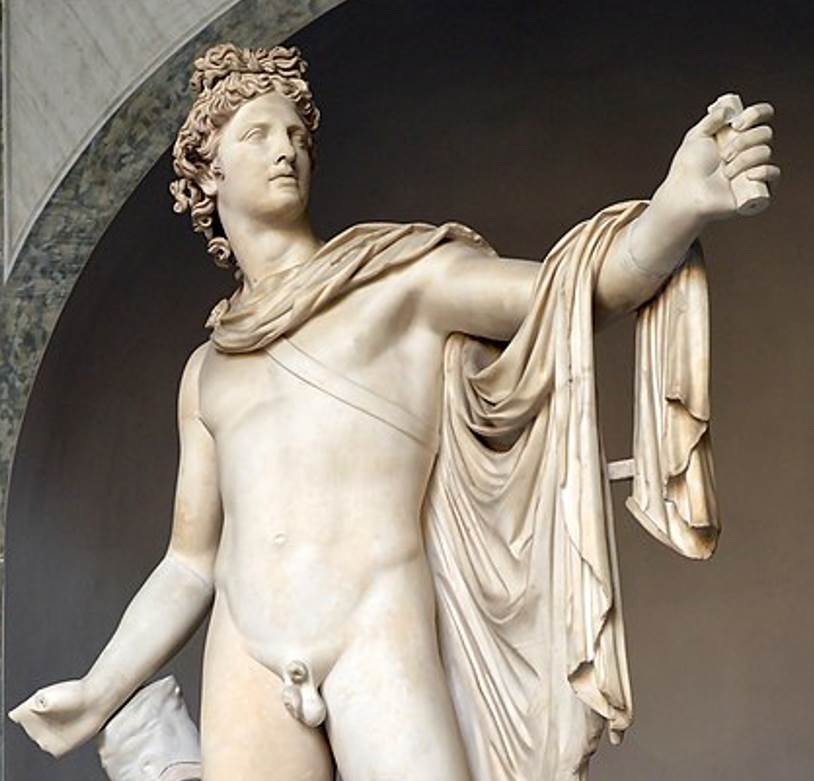
6. It was considered to be the most famous sculpture in the world for many centuries
The sculpture received little attention at first until some drawings of it started surfacing in Rome.
How it ended up in Rome remains unclear, but it was certainly owned by Pope Julius II who was known as Cardinal della Rovere at the time.
When it was moved to Rome, it was admired by just about everybody who saw it and this fascination continued for many centuries.
It remained one of the most famous sculptures on the planet until the Neoclassical era of the 18th and early 19th centuries. It did, however, lose this role during the latter half of the 19th century.
Completely forgotten in the 20th century, the sculpture’s popularity was revived when Apollo Belvedere’s face was used as part of the logo of the Apollo 17 Moon landing mission in 1972.
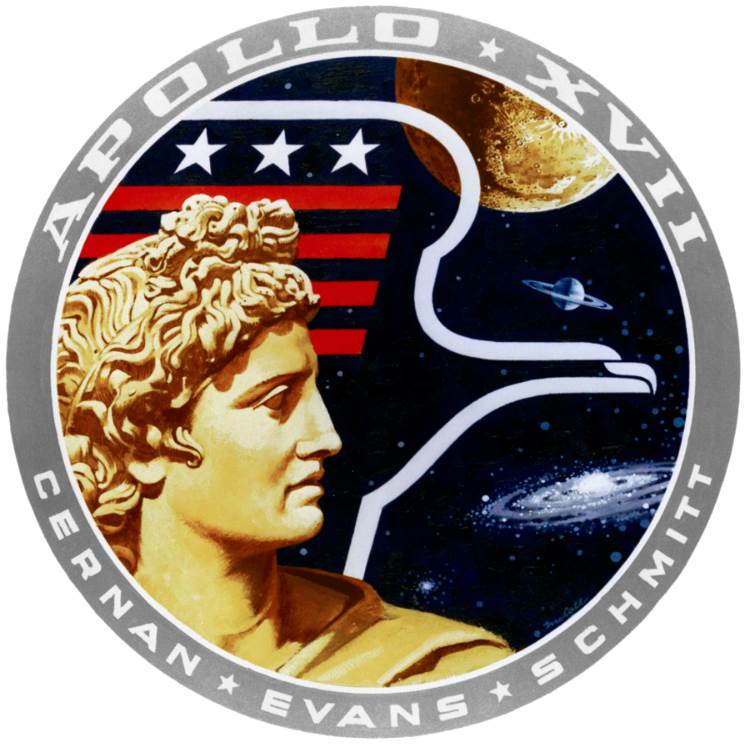
7. How big is the Apollo Belvedere at the Vatican Museums?
The sculpture was carved of white Italian marble and is placed on a pedestal. The Apollo Belvedere reaches a height of 224 centimeters (88 inches).
8. Where can you admire this ancient sculpture?
The sculpture was moved to Vatican City in 1511 and placed in the Vatican Palace in 1511. It has been an attraction here ever since.
It was Pope Julius II who moved it to the Cortile del Belvedere, one of Bramante’s masterpieces in the Vatican which was cut in half at a later time.
Today, the sculpture is on public display at the Pio-Clementine Museum of the Vatican Museums and one of the museum’s most famous attractions.
